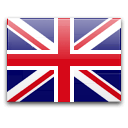Francis Davison
Francis Davison (1919–1984) was a British visual artist, painter, and master of the art of papier collé or torn paper ‘paintings’. In 1952, Davidson began to make collages, initially using a bright palette of brown and gray, depending on the materials he had to master. He used Essex board and covered paper to create dense colors and reduced shapes. He never cuts, only tears, until 1963 he was bound by the rectangular plate he used. Once he gave up the Essex board, his collages gained more freedom, becoming more experimental and ambitious in technology and scale. In fact, the early quadrilaterals took on a jagged, nearly square shape over time. Later, Davidson shredded and recombined waste paper in a variety of ways, used envelopes or shredded paper, and passed a slight edge to the edge. Processing keeps reinventing these ways, thus becoming more complex and contoured. He refused to name these collages, thinking that these works should be self-explanatory. In the 1960s, he introduced brighter colors into his works, using layering to develop their intensity.
Davison is a reclusive artist who never actively seeks the limelight. His works are not often exhibited during his lifetime. Walking in is to enter a garden that is dancing in all colors, like a bee, buzzing drunkenly between the flowers, it is easy to get lost in the beauty. He never adds paint, but only uses the given color of the paper. What looks like a brush mark is the remains of torn sheets previously glued together. He recycles old collages more and more because he works non-stop. In the small front room of the house he uses as a studio, he sells almost nothing, making his works more and more abundant big.
Courtesy of the gallery The Redfern Gallery @theredferngallery
・・・
#FrancisDavison
Davison is a reclusive artist who never actively seeks the limelight. His works are not often exhibited during his lifetime. Walking in is to enter a garden that is dancing in all colors, like a bee, buzzing drunkenly between the flowers, it is easy to get lost in the beauty. He never adds paint, but only uses the given color of the paper. What looks like a brush mark is the remains of torn sheets previously glued together. He recycles old collages more and more because he works non-stop. In the small front room of the house he uses as a studio, he sells almost nothing, making his works more and more abundant big.
Courtesy of the gallery The Redfern Gallery @theredferngallery
・・・
#FrancisDavison






